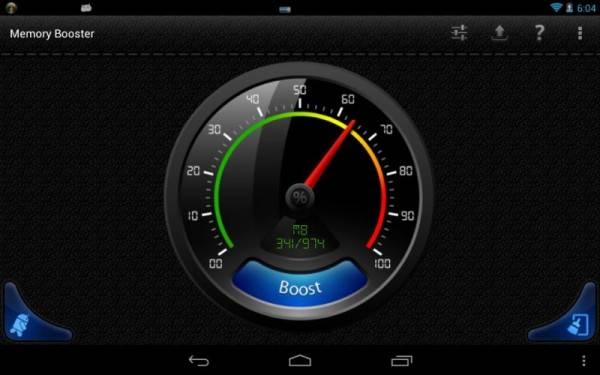
With a new device, most of us will not think of installing a memory or RAM booster off the bat. In fact, online surveys say that most Android users install these kinds of apps through in-app advertisements and similar pushes. And most users install these apps on the generic suggestion that using them would “speed up” their Android devices. But do they really work?
RAM – or that element of your device termed by most users as “memory” – works on a simple quantity basis, which is to say that the more you have of it, the better it is for your phone. Applications that are installed on your phone use RAM as a resource to do the processes they are programmed to do – every app needs a bit of memory to run correctly. Apps share in the total memory available, and if a lot of apps are running, there will be a “queue” in trying to use the RAM as resource.
In this explanation, lesser number of apps running will mean fewer apps sharing the total RAM as a resource, which in turn will mean less queueing and ultimately a zippier device experience for the user. Coming from this simplistic explanation, XDA and PHandroid developers – in numerous discussions – agree that primarily, memory boost apps lessen the number of applications by “switching off” or killing apps that are running in the background, those apps that share in the RAM resource.
But the problem lies in this, that when memory boost apps are not programmed smartly and correctly, they tend to kill essential apps that result in the operating system just spending more precious RAM resource in turning these apps back on. So the battle really is – for the simple Android user – in figuring out which memory boots apps are smarter, in that they turn off or kill the correct apps (the non-essential ones) and ultimately give you better device experience.

In our humble opinion, the best way to go about this is to learn more about the Android OS – yes, quite a bit more than the usual Android user – to know which apps to look for and kill. And then, the next move will be to dive into XDA to look at the numerous memory boost scripts, APKs, and even custom ROMs that have these apps embedded that will let you kill the specific apps that you need to kill.
The downside of this “learned” approach is that it has a steep learning curve, usually requiring users to know how to root their devices, install custom recovery, and flash scripts via custom recovery. The upside is, these resources will usually let you do what you need to do to set up memory boost settings. Sadly, most users will not have the time nor the desire to tinker their devices like this. Mostly, users will end up just installing the “easy-to-use” “one button/one tap” application, because the ease-of-use is what these app developers heavily leverage on. In this latter case, it is imperative on the user to do trial and error to pick out the memory boost app that gives them the best user experience.










It would have been nice to see which “easy use” apps seem to be better. I have been using clean master for a while now and it seems to help. It will also let you go in and close down many different apps and apk. Some battery savers also offer the ability to turn off apps you pick that are running in the background.
I recommend using greenify. It’s great because it has a non root version. You simply go in and choose the apps to close and it actually keeps them closed untill you open them. Excellent for apps like facebook that seem to stay open forever even if you kill them.
If your rooted it gives you even more flexibility. This isn’t necessarily a memory booster app per se’, but it does the same thing.
Josiah . although Jacqueline `s stori is surprising,
last week I bought themselves a Chrysler from having made $5060 thiss month
and-in excess of, 10/k last-month . it’s realy the easiest-work I have ever
done . I started this 4 months ago and pretty much straight away was bringin in
at least $78 per-hour . why not look here Cashduties.COM
I think that all the memory booster apps present on Android are mere eye-candies for user and do nothing practical. Aim of the app is just to provide user illusion of control and gain some satisfaction of having done something to remedy the depressing situation of over-bloated apps consuming 20kb to store one 10 digit phone number. On my phone, I have App named Booster which claims to be releasing 200 to 300MB of memory every time it is clicked. For nice visual effectm it shows memory bubbles flying towards the upper edge of screen and then vanishing into thin air. Animation is really nice! Even if I click the same app 500 times, it keeps releasing 100MB 200MB memory. but still memory usage of android never goes to zero.